After working all day, you may want to sit back and relax. The living room will be the perfect place to do it. Therefore, making it feel comfortable and look stylish is essential.
You may have been doing some research on the best look for your living room. You may also have come across a lot of ideas that make you feel overwhelmed.
Have you ever considered carving out the transitional style? Take a look at these 10 transitional living room seating ideas that are comfortable and chic. As usual, your loyal list maker Simphome, present you with the article and the following video.
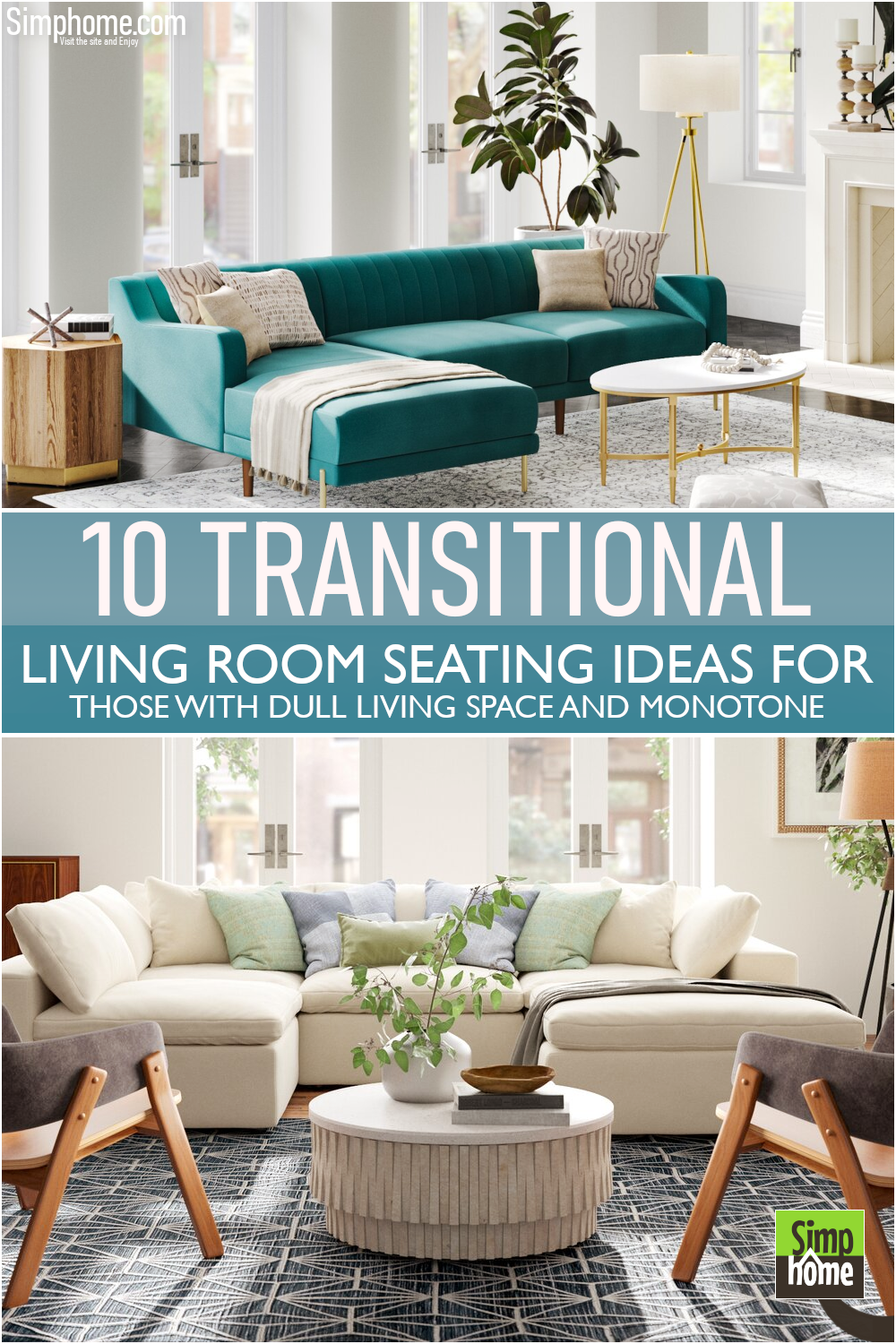
🔊10 Transitional Living Room Seating Video:
List Entries:
20 Living Room Furniture and Seating (Include DIY Cushions)
12 Hidden Storage Inspirations DIY For Living Room
12 Ideas to Declutter your Living Room and Make it More Organized
10 Small Living Room and Rental Transformations
10 Minimalist Living Room Furniture and Storage Improvements
10 Cost-Effective Living Room Interiors
10 Cozy Open Plan Living Room Ideas
10 Inspiring Shiplap Wall Projects for Boring Living Room
10 Sustainable Furniture Ideas for Living Room
10 DIY Living Room Desk and Transformation Ideas
10. Bring in Old and New Styles Together
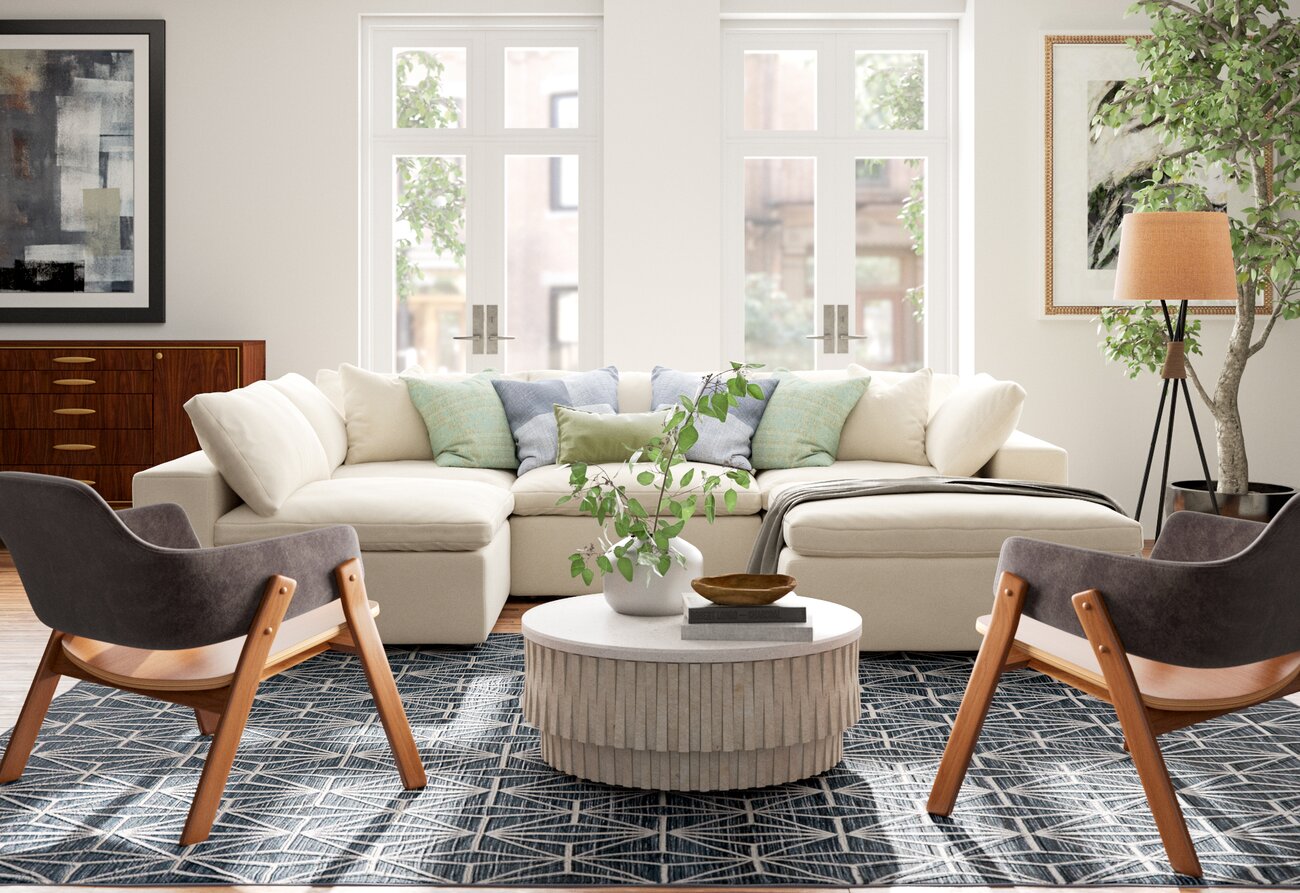 The transitional style is the combination of traditional and contemporary materials. Think about brass and tufted leather combined with chambray and straight-lined furniture.
The transitional style is the combination of traditional and contemporary materials. Think about brass and tufted leather combined with chambray and straight-lined furniture.
Investing in a couch with tapered legs representing mid-century modern style is also a good idea. Then, combine it with a brass drum coffee table to round out the look.
Another option will be the combination of masculine and feminine pieces altogether. Pairing a leather recliner with a tufted chaise lounge would be a great idea because they will add elegance to the space, especially if you install wainscoting paneling along the walls.
The detailed instruction you need to know:
10.1. How to create a cozy, yet sophisticated seating area?
Using the same color palette for your upholstered sectional and your plush carpet is an easy way to tie together these different seating features. Consider purchasing the sectional that comes with chaise legs to have more time to relax. Then, slipcover it in a warm damask fabric so you can use it during the summer months.
10.2. How to incorporate a tufted ottoman into your living space?
Add texture to your transitional living room with a tufted ottoman. Make sure you choose one that features contrasting colors against the fabric. Then, place it under the sectional for an instant retreat for reading or playing games.
10.3. How to create a cozy, yet sophisticated seating area with an Asian-inspired accent?
If you love Asian-inspired design elements, use them easily in your transitional living room with some items from around the house or at local flea markets. It would be best if you choose pieces that are colorfast so they will not fade over time.
10.4. How to create an area for entertainment?
You can incorporate your passions into your space by creating an area for reading, watching TV, and playing games. This way, you can combine all these into one place. However, be careful not to overcrowd it because it will look cluttered.
10.5. How to decorate the room using textured fabrics?
Creating a bold statement is easier than ever if you choose textured fabrics with large-scale patterns. Be sure to select colors right next to each other so they will blend seamlessly. For example, pale gray patterned velvet curtains will look great with the texture of the worn leather sofas in iron ore.
10.6. How to create a transitional living room with a distinctive look?
You can incorporate different elements from the same room to create a cohesive look. This way, your space will not seem chaotic. For example, you can use boho-inspired art and flowery prints. You can also add traditional accents such as wainscoting panels and side tables that feature ornate legs.
10.7. How to use rich wooden accents in your living area?
You can select wood furnishings with stylized details such as mahogany trim around the edges and metal base or bronze frames and mirrors above the sectional or sofa for added visual interest and warmth.
10.8. How to decorate with over-the-top details?
You can incorporate traditional elements into transitional living rooms effortlessly. You can use wooden tables with carved legs and ornate metal lanterns. As you know, details make the space interesting, so you need to pay attention to them carefully.
10.9. How to balance masculine and feminine accents?
If you want to create a more feminine touch in your transitional living room, consider adding tufted ottomans and vintage floral prints on the walls while keeping everything else simple. For example, you can leave the sofa alone because it already features warm colors that belong to that style.
10.10. How to use a chandelier as a centerpiece?
You can use a chandelier as a centerpiece, whether an oversize ceramic piece or a smaller glass lamp. To show off the design well, arrange the rest of the room around it. If you have multiple chandeliers, try to place them at equal lengths from each other. This way, you will avoid cluttering the space with too much lighting.
Incorporating different styles into your transitional living room is easier than you think. Just be careful not to overdo it because too many details can become overwhelming.
9. Stick to Neutral Color Palette
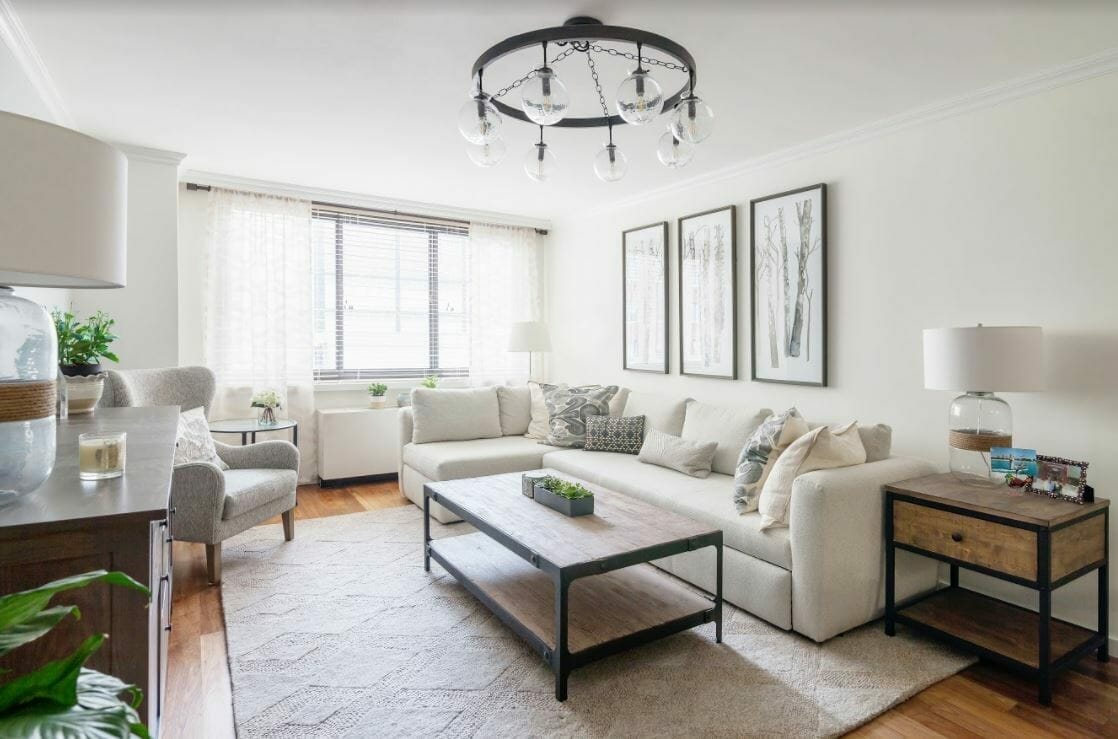 To create a transitional living room, you need to stick to a neutral color palette like sand, grey, and white. These hues will not overwhelm the space. In fact, they can accentuate the lines of the furniture that takes center stage.
To create a transitional living room, you need to stick to a neutral color palette like sand, grey, and white. These hues will not overwhelm the space. In fact, they can accentuate the lines of the furniture that takes center stage.
Traditional features like trims and moldings are a great starting point. After that, you just need to bring in clean-lined chairs and couches to the living room. Then, finish it off with warm fabrics coming in neutral color hues.
If you want to go bolder with darker hues like charcoal, black, or midnight blue, by all means. These colors can add a bit of masculinity to your transitional living room.
8. Show Your Cushions
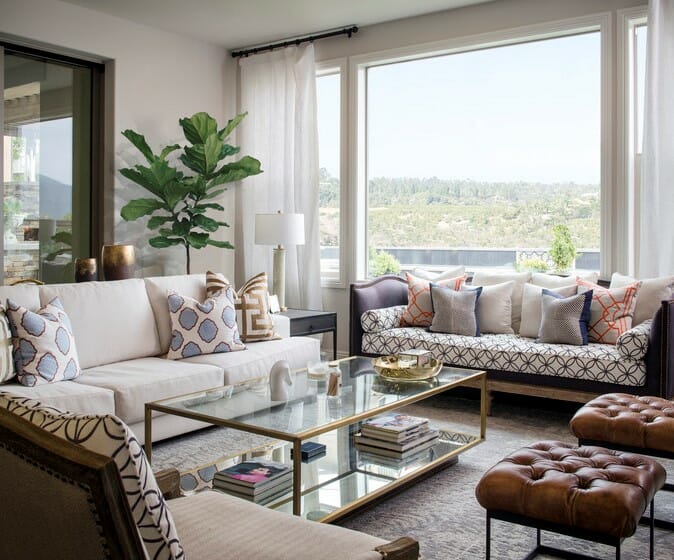 In a minimalist design, you will be likely to keep things down to a minimum. On the other hand, the transitional style requires you to do it the other way around.
In a minimalist design, you will be likely to keep things down to a minimum. On the other hand, the transitional style requires you to do it the other way around.
If you have a lot of cushions, do not hesitate to display them – the more pillows, the better. In fact, scattered cushions are not always bad as long as you thoughtfully arrange them.
Try tossing some cushions with a contemporary pattern over your linen couch. This way, you can brighten up and add more interest to your transitional living room.
To get the best cushions for your living room’s your additional details are:
- Choose cushion inserts that are a little narrower or wider than your cushions
- Choose a cushion that has a single design or pattern on it
- Cover larger cushions with smaller pillows
- Arrange your pillows in clumps rather than symmetry
- Don’t be afraid to use a plain color.
Decorating a transitional living room can be challenging because you need to balance masculine and feminine accents within the room and the rest of the home. Your approach will also depend on how big or small your space is. To create a cohesive look, some furniture pieces from the same room can make good additions to touches of fun and bold colors.
7. Do not Miss the Textural Elements
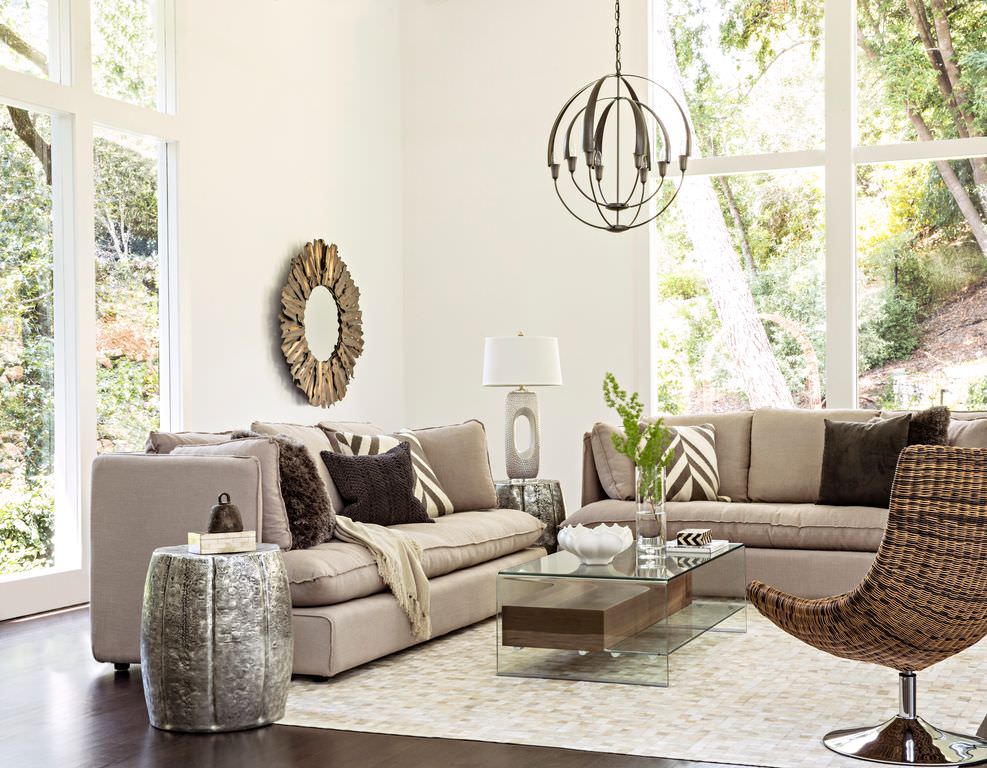 Unlike the minimalist style, a transitional living room tends to welcome a wide array of textural elements because they will enrich the look of the space. Be creative in combining wood, rattan, steel, glass, metal, and fabric.
Unlike the minimalist style, a transitional living room tends to welcome a wide array of textural elements because they will enrich the look of the space. Be creative in combining wood, rattan, steel, glass, metal, and fabric.
This living room, for example, features two comfortable linen couches. Over the sofas are cushions in earthy tones and various patterns and textures, which add comfort and elegance to the seating.
The rattan chair is the perfect fusion of old and new designs, which accentuates the transitional style. This living room also has a glass coffee table in a clean-lined design representing a more contemporary look.
What are textural elements mean?
Textural elements are a clever way to add a bit of texture and masculinity to your transitional living room. They can be deliberately placed against a backdrop of clean lines or sparser furniture.
The masculine side of things is about choosing suitable materials, textures, and oversized textiles. This style embraces bold colors and patterns as well as warm wood furniture.
The feminine side of things is color palettes with soft hues like sand, sandstone, linen, brick, white and cream-colored walls, floral prints on pillows, and fabrics covering the pillows with motifs based on flowers or swirling vines.
6. Velvet Details for Elegance
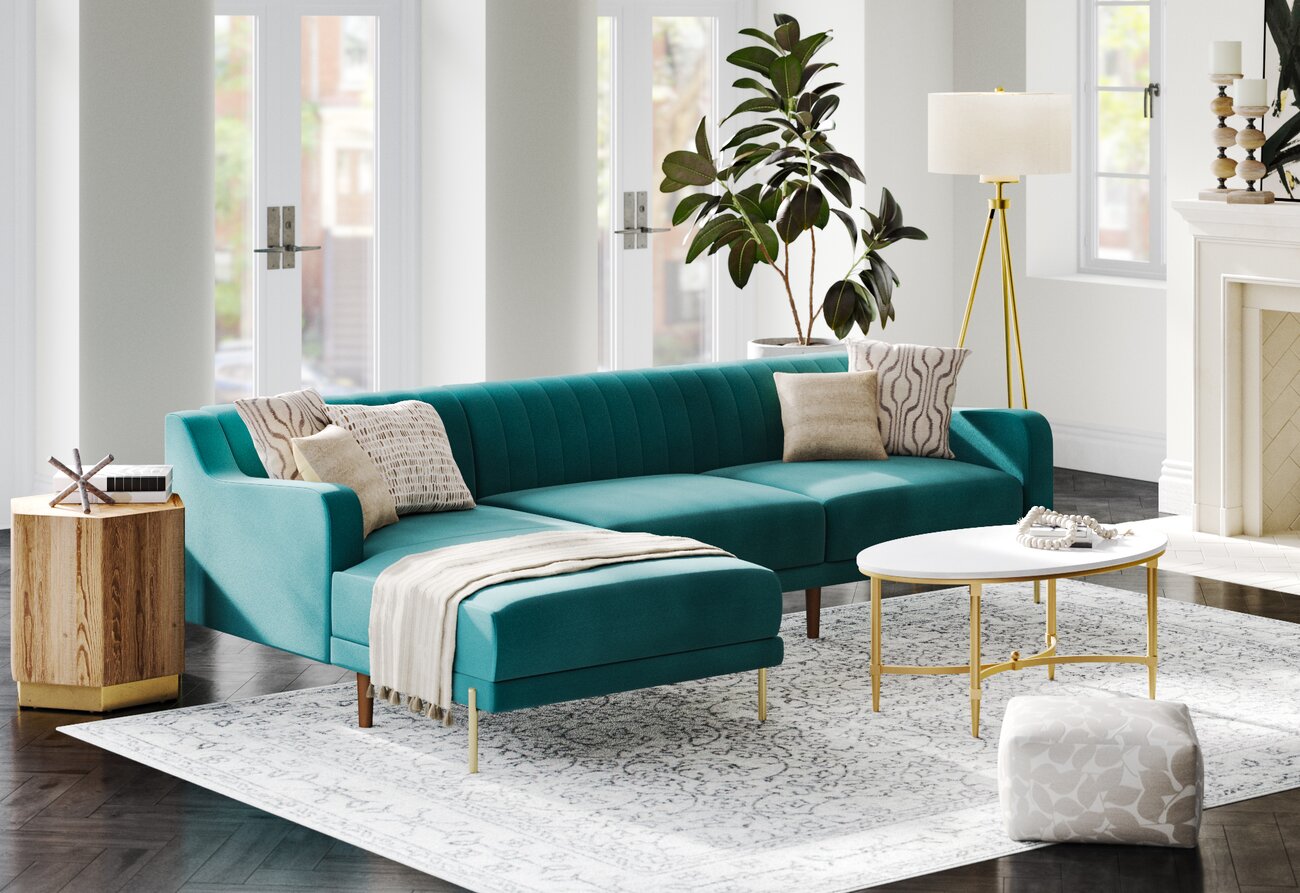
Velvet upholstery is renowned for its comfort and luxury. Thus, placing a velvet sofa in your transitional living room can level up its elegance since it adds a touch of glam. The velvet seating usually comes in jewel tones, which contrast with the neutral color scheme.
If you have ample space, try investing in a velvet sectional sofa, just like the one in this living room. The couch looks outstanding and becomes the center of attention immensely among the neutral color scheme.
Other ideas to increase the elegance of your living room space are:
- Use a velvet-like fabric for upholstery
- Choose a larger diamond tufting diamond pattern
- Mirror the design and layout of the entire room into that sofa
- Opt for an L-shaped sofa to create focal points in different areas of the room
- Choose a neutral color for your walls to let your upholstery take center stage
- Add contrasting pillows to accommodate guests, such as family and friends
- Commit to purchasing one of these pieces
- Decorate with velvet accessories like throw pillows and blankets
Also, Pick the Right Flooring
A transitional living room will undoubtedly look best if you select the right flooring, right? You will need to balance your carpet or hardwood flooring choices since it will make the space look more unified. However, it would help if you did not overdo it with height differences because it can make your living room feel cluttered. Nonetheless, it is also essential to make sure that your floors are clean and tidy because a clean surface can further enhance the beauty of the space.
5. Be Creative with Lines
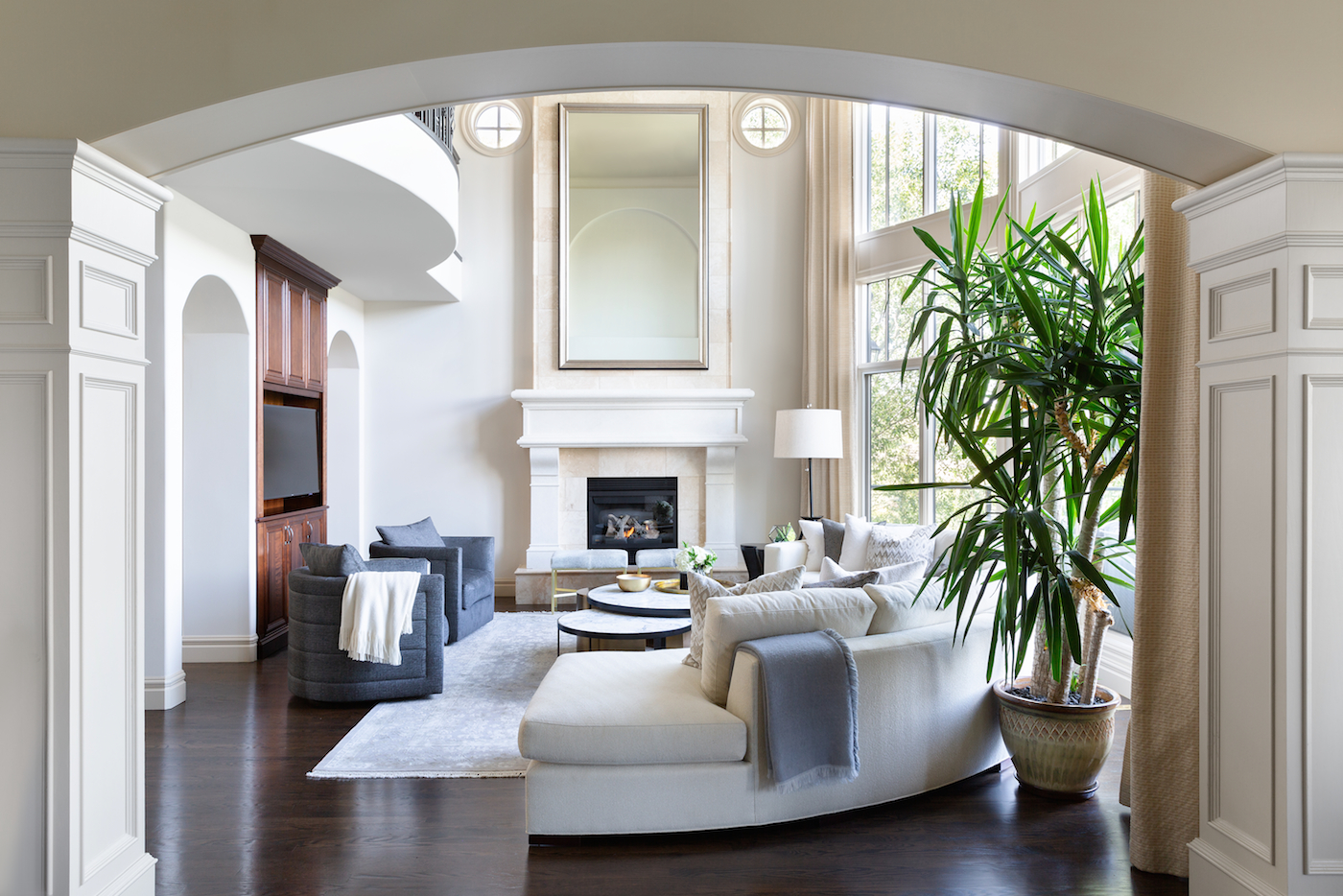 When carving out the transitional style, you need to pay attention to aesthetics and the shape and silhouette. You have to be creative with lines. Thus, you had better try to mix straight lines with curves.
When carving out the transitional style, you need to pay attention to aesthetics and the shape and silhouette. You have to be creative with lines. Thus, you had better try to mix straight lines with curves.
You can achieve this goal by picking the right sofa and coffee table. If your couch is in a tuxedo shape or square track arm, consider investing in a round coffee table to balance the transitional look.
4. Combine Bulky Seating with a Low-Level Coffee Table
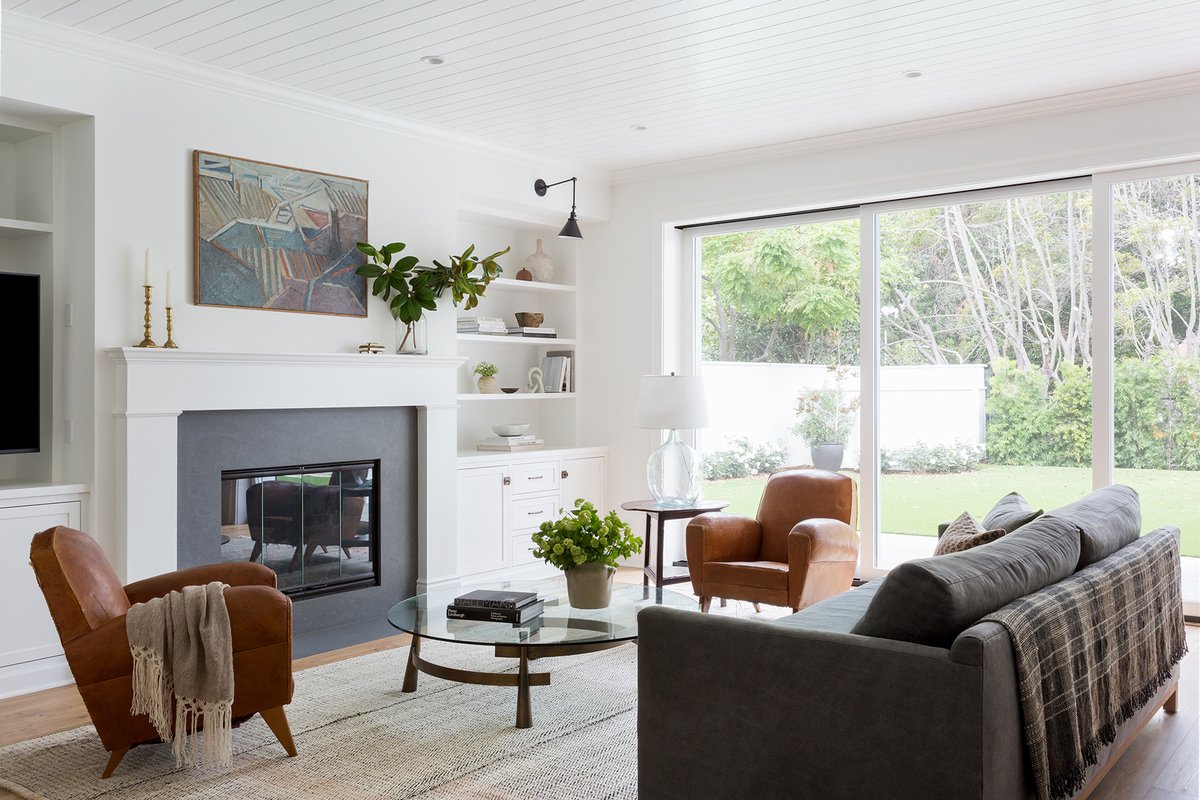 Traditional furniture usually comes in a hefty and bulky design like big armchairs, plush ottomans, and cozy sofas. They are comfortable. However, their visual appearance may give the look of a classic ambiance.
Traditional furniture usually comes in a hefty and bulky design like big armchairs, plush ottomans, and cozy sofas. They are comfortable. However, their visual appearance may give the look of a classic ambiance.
To make it more like a transitional design, you need to combine the modern pieces of furniture like a sleek and low-level glass coffee table and planters with skinny legs. This way, you can add some contrasts to the classic ambiance.
Additional seating settings you can try to upgrade your living room are:
- A higher-level coffee table
- A seating area with a large sofa and multiple chairs
- Adding a balance of chairs and sofas around the room, such as two armchairs and a sofa
- A sofa sectional with at least one chaise lounge on each side
- Mixing up your furniture selection, such as adding one traditional chair or ottoman and one modern counterpart like an acrylic accent stool or a glass coffee table
- Use of architectural fragments like piers, beams, columns, and arches to give the living room a more contemporary look
- Use of an ottoman or upholstered bench as extra seating
- Use of floor lamps for creating visual interest
Additionally, you can, Match Modular Modules.
The modular style is the best to create a transitional living room design to go with your needs. This design means that you should select modular pieces, usually upholstered, because they can be replaced or repositioned easily. You can use them as seating arrangements and accent pieces. The next thing is to start thinking about how you can mix and match these modules to create different combinations for your living room space according to the moment’s needs.
3. Anchor It with a Comfortable Rug
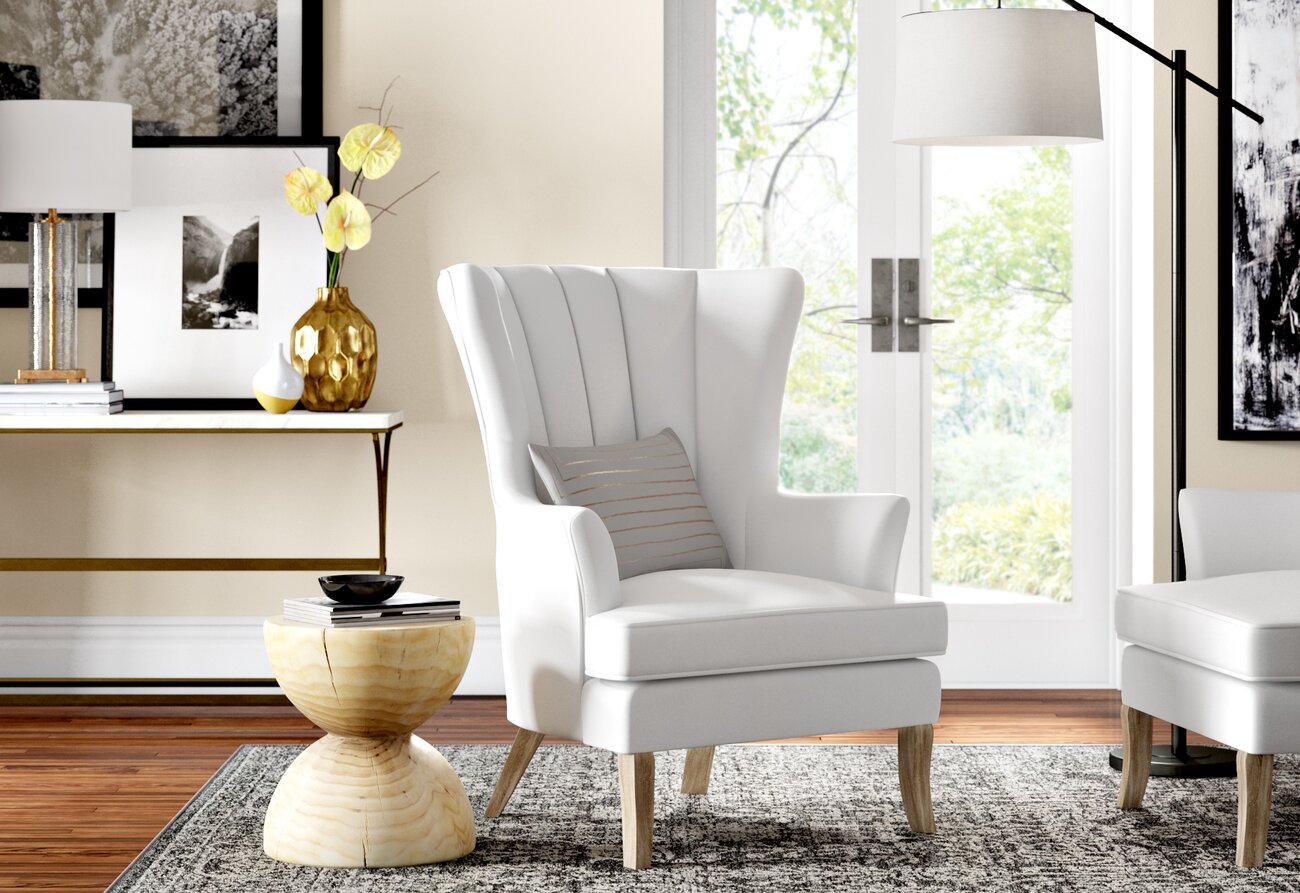 After combining traditional sofas and chairs with a contemporary coffee table, you may need to consider anchoring the seating with a large area rug. It will provide more comfort to your bare feet and add more pattern and textural elements to the space.
After combining traditional sofas and chairs with a contemporary coffee table, you may need to consider anchoring the seating with a large area rug. It will provide more comfort to your bare feet and add more pattern and textural elements to the space.
Besides, an area rug will be beneficial if you implement an open concept floor plan that tends to have fewer walls. The carpet will help you define the living room and distinguish it from the kitchen.
When choosing a new rug for your living room, you need to pay attention to:
1. Size of the rug
2. Shape of the rug
3. Material type
4. Color scheme
5. Other decorative touches, such as pillows and throw blankets
6. Level of softness
7. Utilize a Contrasting Accent Color That Offers a Bold Statement
8. Consider a Horizontal Accent Strip
9. Create a Personalized Vignette
10. Practice With an Accent Piece
11. Add Texture and Pattern with Window Treatments
12. Choose Modular Seating Arrangements
13. Maintain It With An Area Rug
Additionally, Try Tones of White, Black, Gray, Ivory & Brown
Tones of white. They are probably the most preferred choice for your transitional living room design. It could make everything brighter and more elegant looking with that crisp appeal.
2. Use Leather for an Instant Transitional Look
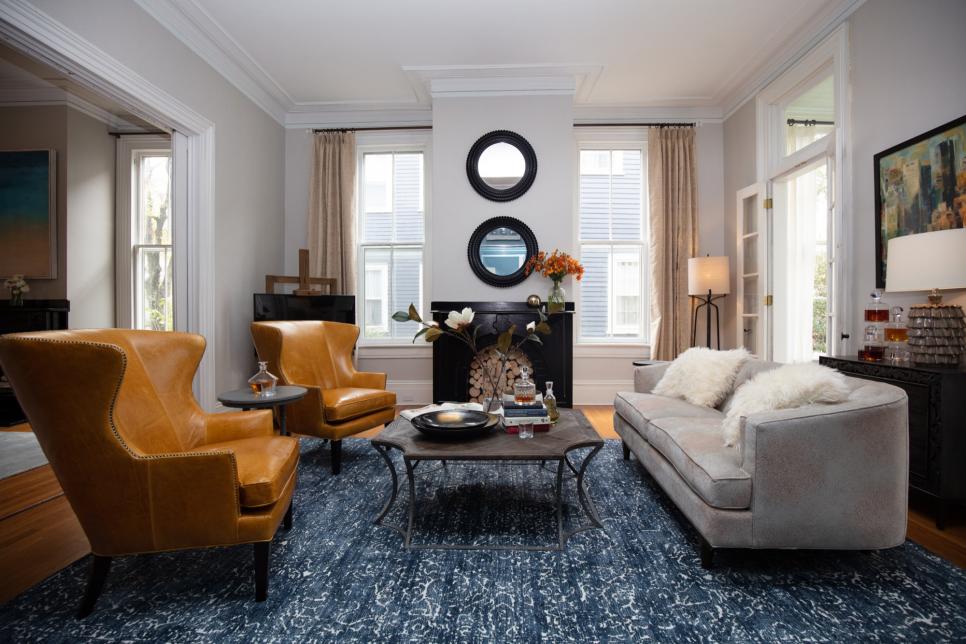 As a good rule of thumb, you are required to combine traditional and modern styles if you want to carve out the transitional design. Unfortunately, they do not have much in common, which makes it even harder. Luckily, you can find one material that embraces both of them well. It is leather.
As a good rule of thumb, you are required to combine traditional and modern styles if you want to carve out the transitional design. Unfortunately, they do not have much in common, which makes it even harder. Luckily, you can find one material that embraces both of them well. It is leather.
If you think you have brought traditional and modern elements to space, but it is still void of harmony, try bringing in a leather ottoman or two leather armchairs. These additional pieces will soften the boundaries between them.
If leather is out of your budget range, you can consider:
2.1. Use Upcycled Leather for a Refined Look
This item is an excellent material to add value and add character to your space. It can help you give the room a refined look and full of luxury. If you can’t afford leather, you can try repurposing or buying finds from thrift stores and vintage shops.
You just need to:
- 1.1. Clean it properly and use rubbing alcohol and/or bleach to clean it, while using warm water to wash it
- 1.2. Remove the dirt using sandpaper or chamois
- 1.3. Apply elastics on the side seams while doing steam treatments at least twice a year for at least 30 minutes each time
- 1.4. Additional treatments to give the leather a pleasant smell and touch
- 1.5. Try Antique Leathers for Effect
2.2. An Antique Leather
Antique leather is also an option you can try to create a transitional design in your living room. It is an option that provides excellent value with its charming patina and vintage aesthetic. It is more durable than genuine leather but is still soft. If you want to achieve this look, follow the steps below:
- Use distilled white vinegar along with water for cleaning
- Apply silicone or beeswax for oiling it up to restore its natural vitality
- Wax it regularly with carnauba wax polish (this antique require additional maintenance)
- Maintain the Shine With a Natural Furniture Polisher
Whether you choose genuine leather or antique leather, you need to find an excellent furniture polish and natural furniture cleaner to maintain your space and make it look stunning. To keep and maintain your area and ensure that it is sparkling clean, use a natural cleanser. They are eco-friendly and can be used to disinfect surfaces and remove stains without leaving any residue behind. In addition, they may even be able to kill all kinds of bacteria. - Bring in Wooden Accents for a Subtle Transition
An easy way to spice up your transitional design is by bringing in wooden accents into it.
Lastly, Number 1. Keep Patterns down to a Minimum
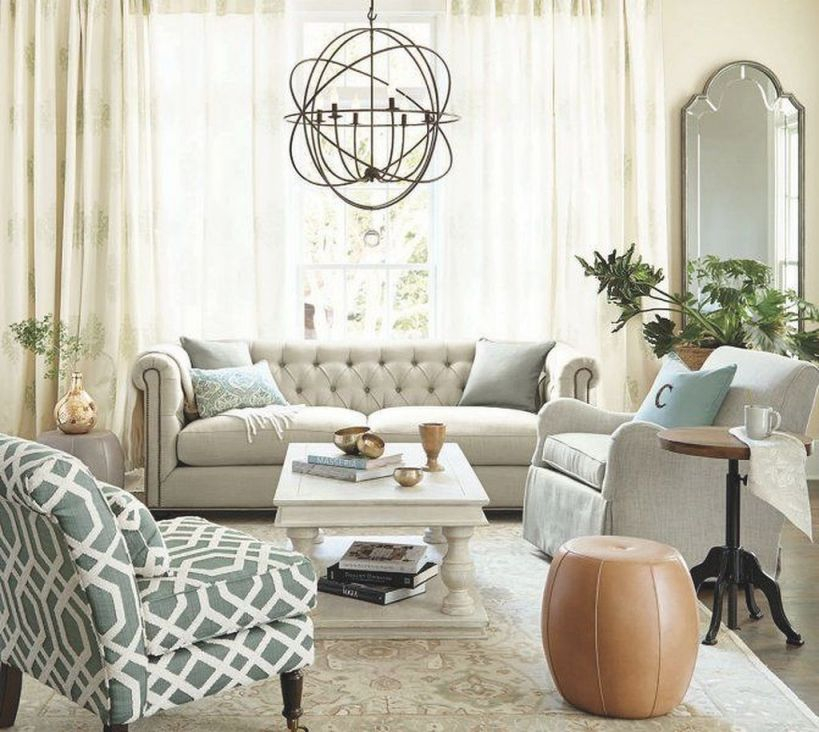
You have learned that a transitional design requires more textural elements and cushions. However, you still have to limit the number of patterns included in the living room. This way, you can maintain the sophisticated look of this style.
Other ideas you can try to give your living room a fresher and more ideal look you can:
1. Use Nothing But Natural Fabrics
2. Choose Different Design Pillows Instead of Other Accent Pieces
3. Mix the Traditional with the Contemporary When Possible
4. Make Use of Multitude of White Elements in Your Space
5. Utilize a Contrasting Accent Color That Offers a Bold Statement
6. Use Wood Accents to Give your Space a Transitional Look
7. Try Leather for an Instant Transitional Look
8. Limit Patterns to Low Number
9. Utilize Decorative Fabrics
10. Add Fabric to Dining Table
11. Layer Textures in Your Entire Space
12. Use Wooden Accents to Provide an Eastern Influence
13. Always Match the Decor with the Style of the Furniture
14. Utilize Bold Color Schemes
15. Add Neutral Furniture Additions in Neutral Tones to Alter Its Tone
16. Spruce up any Dull Chairs and Sets by Adding Accessories that Offers Contrasting Details
17. Utilize Neutral Furniture Additions in Neutral Tones to Alter Its Tone
18. Utilize Bold Color Schemes
19. Use Contrasting Accent Colors That Offer Bold Statement
20. Maintain It With an Area Rug
21. Create a Personalized Vignette
22. Be Creative to Transform Plain Rugs into Works of Art
The first thing you have to do is choosing the right furniture for your space. If you are unsure, ask the help of your friends, family, or neighbors or even search on the internet (such as Simphome) and find some ideas for your new transitional living room design that you like and that will transform your house.
So, what do you think? A transitional style is worth considering, right? It combines the warmth of the traditional look and the sleekness of contemporary design. And these 10 transitional living room seating ideas will help you out so that you can create harmony instead of a haphazard look.
References:
10. Jossandmain.com, Mymove.com
9. Mymove.com, Decorilla.com
8. Decorilla.com
7. Mymove.com, Homestratosphere.com
6. Jossandmain.com
5. Mydomaine.com
4. Mydomaine.com
3. Jossandmain.com
2. Mydomaine.com, Photos.hgtv.com
1. Awesomedecors.us